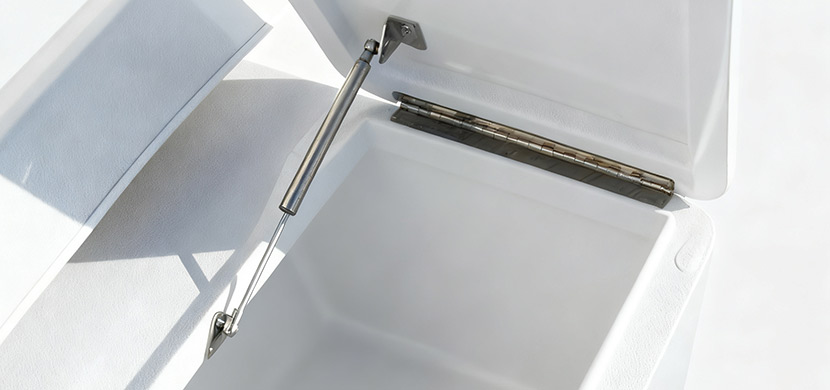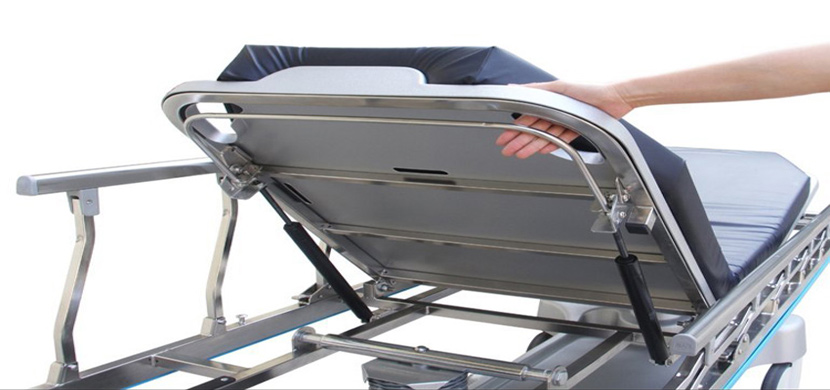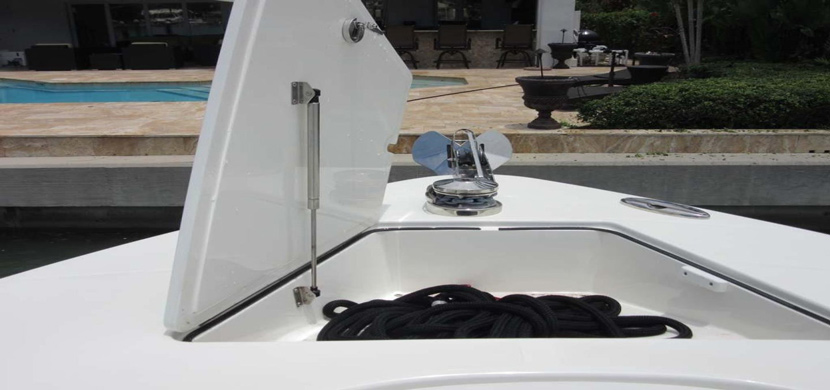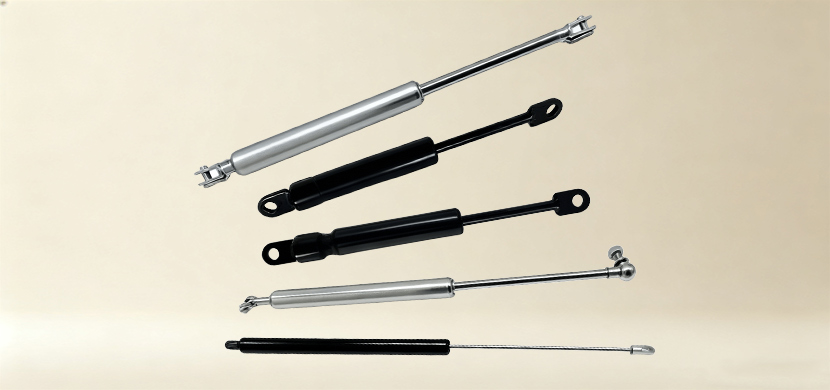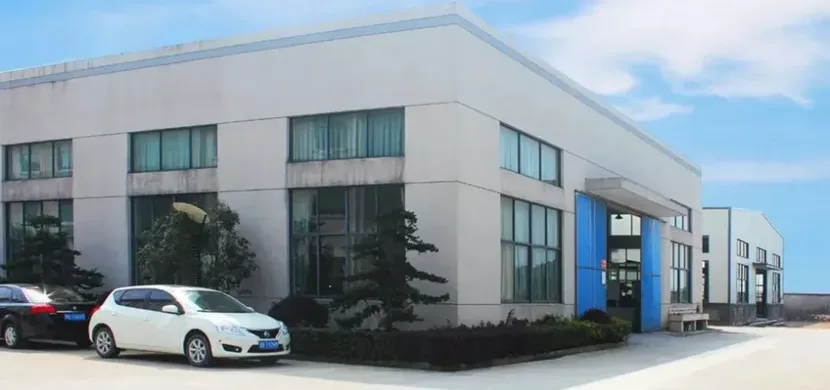Gas Spring Safety and Installation Guidelines
Gas Spring Safety and Installation Guidelines
Proper handling and installation of gas springs are essential to ensure safe operation, long-lasting performance, and reliability. Gas springs contain pressurized nitrogen and sensitive sealing components that must be treated carefully. Before installing or using any gas spring, it is important to follow the instructions below to prevent damage, ensure smooth operation, and maintain warranty coverage.
Proper handling and installation of gas springs are essential to ensure safe operation, long-lasting performance, and reliability. Gas springs contain pressurized nitrogen and sensitive sealing components that must be treated carefully. Before installing or using any gas spring, it is important to follow the instructions below to prevent damage, ensure smooth operation, and maintain warranty coverage.
Important Please read it carefully
Please read the following instructions carefully to ensure safe use of the gas spring and avoid damage.
Piston Rod Protection
Before installing or handling a gas spring, it’s essential to protect the piston rod from any form of damage. The rod surface plays a key role in sealing and smooth movement—any scratch, dent, or paint contamination can lead to leakage or product failure. Please follow the guidelines below carefully to maintain product performance and warranty validity.
▪ Do Not
Scratch, dent, chip, bend, or paint the piston rod
▪ Important
Rod damage will invalidate the guarantee
Standard Gas Spring Seal
Before installing a standard gas spring, it’s important to understand how its internal seal works. The seal ensures smooth movement and prevents gas leakage, but it relies on proper lubrication from the oil inside the cylinder. Incorrect installation can lead to premature wear or failure.
▪ Proper Seal Design
Standard gas springs (no special internal oil chamber) have a seal where the piston rod enters the cylinder.
▪ Lubrication Requirement
The seal must be lubricated by the oil inside the cylinder for correct operation.
Storage & Installation Orientation
Proper storage and installation orientation are essential to ensure the gas spring’s long-term performance. Keeping the piston rod positioned downward allows internal oil to lubricate the seal effectively, reducing friction and wear. Incorrect orientation may cause insufficient lubrication, leading to seal failure or reduced lifespan.
▪ Keep the Piston Rod Down
Store and install the gas spring with the piston rod facing downward to ensure proper lubrication and sealing.
▪ Maintain Rod-Down Position
If the gas spring cannot be fully installed rod-down, make sure it stays in that position most of the time during use.
▪ For Special Oil Chamber Springs
For gas springs with special oil chambers, please contact Gastac for professional installation guidance.
Gas Pressure & Safety
Gas springs are high-pressure devices filled with inert nitrogen gas. Proper handling is crucial to ensure safety and prevent damage. Misuse, puncturing, or incineration can lead to dangerous failures. Always follow installation guidelines and safety precautions when handling gas springs.
▪ Pressurized with Nitrogen Gas
Gas springs are filled with inert nitrogen gas under pressure to ensure stable performance and smooth operation.
▪ Safety Warning
Gas springs are high-pressure components. Do not puncture, heat, or burn the cylinder to avoid explosion or injury.
Important Please read it carefully
Please read the following instructions carefully to ensure safe use of the gas spring and avoid damage.
Piston Rod Protection
Before installing or handling a gas spring, it’s essential to protect the piston rod from any form of damage. The rod surface plays a key role in sealing and smooth movement—any scratch, dent, or paint contamination can lead to leakage or product failure. Please follow the guidelines below carefully to maintain product performance and warranty validity.
▪ Do Not
Scratch, dent, chip, bend, or paint the piston rod
▪ Important
Rod damage will invalidate the guarantee
Standard Gas Spring Seal
Before installing a standard gas spring, it’s important to understand how its internal seal works. The seal ensures smooth movement and prevents gas leakage, but it relies on proper lubrication from the oil inside the cylinder. Incorrect installation can lead to premature wear or failure.
▪ Proper Seal Design
Standard gas springs (no special internal oil chamber) have a seal where the piston rod enters the cylinder.
▪ Lubrication Requirement
The seal must be lubricated by the oil inside the cylinder for correct operation.
Storage & Installation Orientation
Proper storage and installation orientation are essential to ensure the gas spring’s long-term performance. Keeping the piston rod positioned downward allows internal oil to lubricate the seal effectively, reducing friction and wear. Incorrect orientation may cause insufficient lubrication, leading to seal failure or reduced lifespan.
▪ Keep the Piston Rod Down
Store and install the gas spring with the piston rod facing downward to ensure proper lubrication and sealing.
▪ Maintain Rod-Down Position
If the gas spring cannot be fully installed rod-down, make sure it stays in that position most of the time during use.
▪ For Special Oil Chamber Springs
For gas springs with special oil chambers, please contact Gastac for professional installation guidance.
Gas Pressure & Safety
Gas springs are high-pressure devices filled with inert nitrogen gas. Proper handling is crucial to ensure safety and prevent damage. Misuse, puncturing, or incineration can lead to dangerous failures. Always follow installation guidelines and safety precautions when handling gas springs.
▪ Pressurized with Nitrogen Gas
Gas springs are filled with inert nitrogen gas under pressure to ensure stable performance and smooth operation.
▪ Safety Warning
Gas springs are high-pressure components. Do not puncture, heat, or burn the cylinder to avoid explosion or injury.
Gas Spring Installation instruction
Gas spring has nitrogen gas in the cylinder, and through the piston, there is elastic features for it. The product does not require outside work force, and its lift force is stable, free extending and compressing(lockable gas spring can be positioned anywhere). Therefore, its application is very wide, but the following points shall be noticed when we install it:
Gas Spring Installation instruction
Gas spring has nitrogen gas in the cylinder, and through the piston, there is elastic features for it. The product does not require outside work force, and its lift force is stable, free extending and compressing(lockable gas spring can be positioned anywhere). Therefore, its application is very wide, but the following points shall be noticed when we install it:
Gas Spring Installation instruction
Gas spring has nitrogen gas in the cylinder, and through the piston, there is elastic features for it. The product does not require outside work force, and its lift force is stable, free extending and compressing(lockable gas spring can be positioned anywhere). Therefore, its application is very wide, but the following points shall be noticed when we install it:
